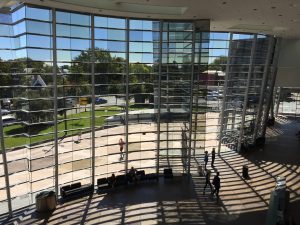The devastation from recent earthquakes (2010, 2011, 2016) which struck Christchurch (NZ) make the city look a lot like Berlin in the 1990’s: ruin, demolition, cranes, and construction sites everywhere.
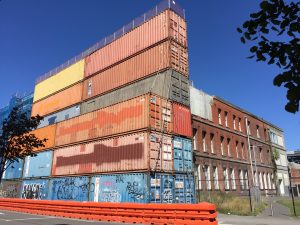
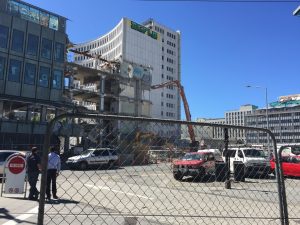
An impressive overview of what Christchurch looked like pre-earthquake can be seen in a profusely-illustrated book by John Wilson http://www.nationwidebooks.co.nz/author/john-wilson. The loss to architectural history is probably a major boon to the construction industry, the number of construction workers presumably matched by the number of suppliers for steel, glass, concrete, etc. It boggles the mind!
Disasters also inevitably generate memorials, and Christchurch has managed a powerful, albeit understated, one.
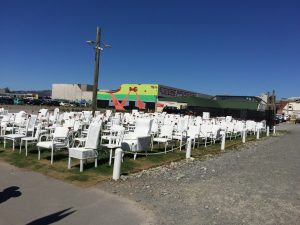
An array of empty chairs occupies a field across the street from the city’s 2013 celebrated so-called “Cardboard Cathedral” (officially Transitional Cathedral) by noted Japanese architect, Shigeru Ban (about which I will write separately).
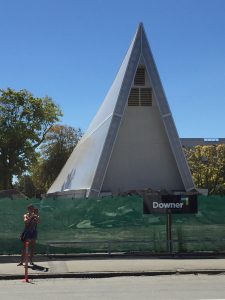
The work of artist Pete Majendie http://www.185chairs.co.nz/, this memorial is as simple and eloquent as any I’ve seen: 185 chairs, one for each person killed in the February 2011 quake. All the chairs are white — kept clean by volunteers — and mostly different from one another. Simple side chairs, comfy easy chairs, children’s high chairs — coalesce to suggest an uncanny feeling of variety that personalizes what might otherwise feel anonymous.
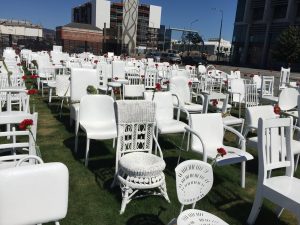
Perhaps most heartbreaking is the infant seat in the front row.
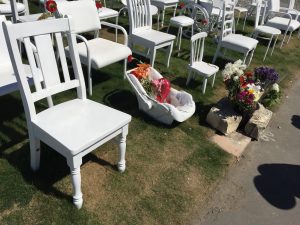
In our culture we focus so much on perpetrators and victims, on families and stakeholders, that one is struck here by the absence of the many added layers of meaning and interpretation which often accompany memorials — perhaps because the perpetrator here was Mother Nature, and one is confused about just how angry one can be with her. But who is to plumb the depths of grief in the survivors’ feelings?
So it was somewhat startling to walk directly from this memorial to the Christchurch Art Gallery https://christchurchartgallery.org.nz/ and find yet another chair iteration — here a decorative and celebratory one.
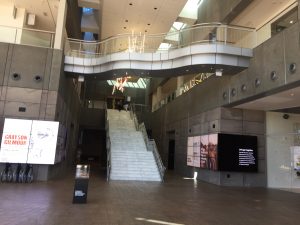
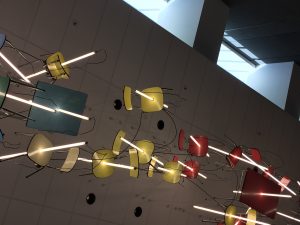

Hanging above the main staircase is an array of chairs and fluorescent lights that add a festive note to the museum’s modernist architecture, designed by the Buchan Group, who won a 1998 competition (limited to New Zealand architects).
The massive glass facade creates a welcoming vast lobby space (free admission!), and the capacious, serene galleries (filled with a range of interesting and engaging exhibitions) give no evidence of the museum’s use as the Emergency Operating Centre following the earthquakes. The building only reopened in December 2015, after repairs were made to its extensive damage.
But all of a sudden this floating array of chairs felt out of place — mocking the simple chair memorial I had just seen, a mere ten-minute walk away. Which is, of course, a lesson in how easily we read and misread what we see. Because we can’t help but add what we know to what we see. Indeed, art museums play an important role in assisting our understanding of this. I also couldn’t help but recall Don McLean’s line, “…empty clothes that drape and fall on empty chairs…” http://www.songfacts.com/detail.php?lyrics=12780 in his dirge-like Starry Starry Night, which matched my sense of the Christchurch earthquake memorial. In this city empty chairs cascading near a museum ceiling feel somewhat less joyful than the architects/designers likely intended. And 185 of them in a field can be splendidly eloquent. Such are the ironies of contexts and their mixed messages.
